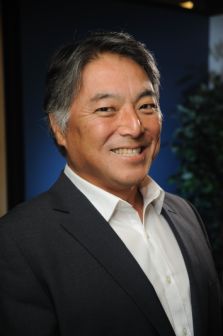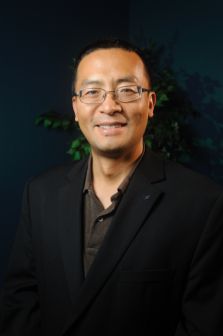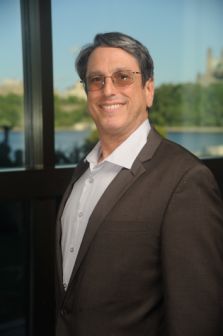2016 Meetings
The linked titles of some meetings are the presentations speakers provided.
December 13, 2016: " Military Control of Electromagnetic Interference, WWII to the Present " Ken Javor, Consultant
Abstract: MIL-STD-461 and MIL-STD-464 are collections of requirements based on problems encountered in the past and the measures taken to ensure they are not encountered again. As such each individual requirement may or may not be applicable on a given program or may require significant tailoring in order to be useful. The presentation gives historical background on many of these requirements and explains the relevancy and/or lack thereof for typical modern situations. For example the rules for cable layout in MIL-STD-461 are traced back to 1940s aircraft radio installations with a demonstration using WWII vintage equipment, and the ramifications vs. the layout on a modern spacecraft are compared and contrasted. The basic set-up of the tabletop ground plane used for testing equipment installed in vehicles is compared to the OATS-based set-up for equipment designed for home, office and industrial plant use in order to yield the proper perspective on what these controls are all about. Rationale behind the spectrum analyzer noise floor survey in MIL-STD-464 is presented in a series of demonstrations on the audible/inaudible effects of radio frequency interference.
Bio: Ken Javor has worked in the field of EMC for thirty-five years, mainly in aerospace. He has been involved with military and aerospace EMI/EMC standards development for over twenty years, and has been an industry representative to the DoD Tri-Service Working Groups that write MIL-STD-461 and MIL-ST-464 for several revision cycles. For the last fifteen years he has been a self-employed EMC consultant, providing subject matter expert services to government and industry. He has published over thirty technical papers and is the author of a handbook on the history, development and rationale behind EMI and EMC standards.
November 08, 2016: " An Introduction to Free-Field Measurements of Wireless Devices in Reverberation Chambers " Kate Remley, NIST
Abstract: When the antenna is integrated into the body of a wireless device, as it is for cell phones and many other portable devices, performance testing is typically done under free-field conditions. In this overview presentation, we will discuss free-field characterization of some key wireless-device parameters by use of reverberation chambers. We will discuss recent research and some of the issues related to the use of these chambers for testing devices that transmit modulated signals.
Bio: Kate Remley received the Ph.D. degree in Electrical and Computer Engineering from Oregon State University, Corvallis, in 1999. From 1983 to 1992, she was a Broadcast Engineer in Eugene, OR, serving as Chief Engineer of an AM/FM broadcast station from 1989-1991. In 1999, she joined the RF Technology Division of the National Institute of Standards and Technology (NIST), Boulder, CO, as an Electronics Engineer. She is currently the leader of the Metrology for Wireless Systems Group at NIST, where her research activities include development of calibrated measurements for microwave and millimeter-wave wireless systems, characterizing the link between nonlinear circuits and system performance, and developing standardized test methods for RF equipment used by the public-safety community.
October 11, 2016: " EMC in the Canadian Military - Hands-On and Practical Considerations " Kris Hatashita, Consultant
Abstract: Military electromagnetic compatibility (EMC) is a matter of life and death as modern war-fighters rely on the safe, secure and reliable functioning of their devices. Military EMC includes aspects of electronic interoperability that are seldom or never considered in the commercial realm. This talk presents technical details of EMC consideration in tactical and strategic military operations. The topics discussed include hazards of electromagnetic radiation to ordnance (HERO), electromagnetic data security (EMSEC), counter improvised explosive device (CIED) EMC issues and includes first-hand experiences of work done in the Afghan theatre.

Bio: Kris Hatashita has been an EMC professional for thirty years and has worked for industry and government organizations as an EMC subject matter expert. Currently, Kris is a consultant to the Canadian Department of National Defence for the Army Communications Group.
September 13, 2016: " The myth about ground " Zhiping Yang, Google
Abstract: GROUND is widely used in high-speed circuit modeling and simulation. However, there are a lot of misconceptions and misunderstandings about ground in the high-speed circuit industry. Does ideal ground really exist? If not, why do we use it in simulations? Should we connect the reference node of S-parameter model to ideal ground? Is ground bounce real and well defined? Should we put partial inductance and resistance on the ground net? What can we do or can not do with S-parameter model? These questions are commonly asked by high-speed circuit designers. Answers from different people may be quite different and even contradictory. In this presentation, these questions will be answered with some simple, but powerful examples. At the end, the audience should have a better understanding about the ground and how to use it in high-speed simulations.

Bio: Zhiping Yang works in Google Consumer Hardware Group. Before he joined Google, he worked in Apple, Cisco, and Nuova systems. His research interests include signal integrity and power integrity methodology development for Die/Package/Board co-design, high-speed optical module, various high-speed cabling solution, high-speed DRAM/storage technology, and high-speed serial signaling technology. He has published more than 30 research papers and has 15 approved and pending patents. His research and patents have been applied in Apple iPhone 5S/6/6S, Cisco UCS, Cisco Nexus 6K/4K/3K, and Cisco Cat6K products. He is a senior IEEE member. He received his Ph.D. from University of Missouri-Rolla and his B.S. and M.S. from Tsinghua University, Beijing.
May 10, 2016: " Understanding Maxwell’s Equation–EMC Made Simple " Mark Montrose, Montrose Compliance Services
Abstract: We were all taught in school, usually poorly, Maxwell’s equations with a focus on solving complex numerical problems that had little to no relationship with applied engineering. Theory helps us understand what occurs with field propagation, somewhere in free space but generally not at the component level. Maxwell does not directly address circuit design or analysis which is the core foundation of our profession. To be able to identify an EMI problem after a printed circuit board fails testing and computational analysis is not possible after the fact, one must understand visually what “Maxwell tell us” without math, in order to locate the problem area quickly and at low cost. This presentation is based on a unique way of understanding field propagation in the time domain with a creative means of describing transmission line theory or the field of electrical engineering. Maxwell’s equation can be easily converted into five simple algebraic equations, which will be presented.

Bio: Mark has been an active and continuous member of the SCV EMC Chapter for 35 years and is the principle consultant of Montrose Compliance Services with a large international client base. He currently sits on the Board of Directors of the IEEE EMC Society, was founder and first president of the IEEE Product Safety Engineering Society (PSES) and member of Board of Director (Division VI) of the IEEE (2009-2010). In addition, he is an honored (life) member of the EMC Society and past distinguished lecturer. He teaches for University of California Santa Cruz Extension as well as at international EMC conferences. Mark has authored 17 papers published in IEEE Xplore and two papers in the Transactions of the EMC, all based on applied, hands-on EMC engineering design and analysis. He also authored five extremely popular textbooks, his latest titled “EMC Made Simple-Printed Circuit Board and System Design”.
April 12, 2016: " Impedance Discontinuity and Design Optimization for High-Speed Differential IOs " Chunfei Ye , Intel
Abstract: Impedance discontinuity is one of the key factors impacting SI performance for a high-speed IO link. In this presentation, impedance discontinuity will be discussed on IO specifications, IO buffer design, high volume manufacture variation, non-ideal behavior or design from interconnects such as PCB via stub, connector, package vertical path, etc. Performance impact due to impedance discontinuity will be investigated through modeling, simulation and measurement. Design examples will be given for interconnect design for the IOs to achieve cost-performance optimization.
Bio: Chunfei Ye works with Intel Corporation as Senior Staff Engineer, responsible for PCH and SOC CPU SI design for SATA, SAS, USB, and package electrical design for all generations of Intel server platforms from 2005. He is SI team lead and tech lead in theserver group. Chunfei Ye obtained B.Sci. in Mathematics in 1982 from Hangzhou University and Ph.D. in Electrical Engineering in 1994 from Southeast University. Before joining Intel in 2002, his work experience includes working as Associate Professor with Shanghai Tiedao University China, visiting scholar and instructor with Massachusetts Institute of Technology USA, and Senior Engineer at Institute of High Performance Computing Singapore. Chunfei joined Intel China Ltd in 2002 as group manager supporting signal integrity and power integrity for Intel communication products. He joined Intel server group in 2005 supporting server PCH and SOC CPU SI design since then. Chunfei is IEEE EMC TC 10 Secretary. He holds a few patents and have more than 50 publications in international journals and on conferences.
March 8, 2016: " Upcoming changes to IEC 61000-4-3 " Chuck Britten, Amplifier Research
Abstract: IEC 61000-4-3 is an evolving standard addressing radiated immunity testing primarily in commercial electronic products. It is updated every few years to reflect real world changes in the ambient RF/microwave environment and accommodate new and hopefully improved test methods. It is maintained by standards committee Working Group 10. This presentation will discuss how the standard gets updated, the timing of the next update, and what changes are being considered.
Bio: Chuck Britten is a regional sales manager for ARI – Amplifier Research Instrumentation RF/Microwave Division. He has been involved with ARI and been an active in the EMC community since 1996. While working in Oregon, he was a member of the local IEEE EMC chapter and on the committee that organized and brought the annual EMC Symposium to Portland in 2006. His technical training is courtesy of the U.S. Navy and he holds a degree in Economics.
February 9, 2016: " Introduction to Antenna Pattern Measurement " Michael Foegelle, ETS-Lindgren
Abstract: While antenna pattern measurements have been a common fixture in the defense and aerospace industries for almost fifty years, the proliferation of wireless devices over the past fifteen years have made antenna pattern measurements almost commonplace. In the EMC industry where test systems are equipped with turntables for rotating the device under test, it’s not uncommon to obtain simple azimuth cut antenna patterns from such a system. However, extending that to full spherical antenna pattern measurement requires a bit more consideration. This presentation will introduce the various concepts of antenna patterns and antenna pattern measurements, including common system components. These techniques are the basis for passive antenna pattern measurement used by antenna designers as well as active antenna pattern measurements used for wireless device performance testing.
Bio: Dr. Michael D. Foegelle is the Director of Technology Development at ETS-Lindgren in Cedar Park, Texas, and has more than 20 years of test and measurement experience in RF and wireless. He received his Ph.D. in physics from the University of Texas at Austin. Dr. Foegelle has been actively involved in standards development on the American National Standards Institute (ANSI) Accredited Standards Committee C63 on electromagnetic compatibility, CTIA Certification Program Working Group, Wi-Fi Alliance, WiMAX Forum, IEEE 802.11, and 3GPP. He has served as chair or vice-chair of various working groups in those organizations and currently co-chairs the joint CTIA/Wi-Fi Alliance Converged Wireless Group and the CTIA OTA Measurement Uncertainty Subgroup. He has authored or co-authored numerous papers in the areas of Electromagnetics, EMC, Wireless Performance Testing, and Condensed Matter Physics, holds several patents on wireless and electromagnetic test methods and equipment, and is dedicated to advancing the state of the art in radiated RF testing of emerging wireless technologies.
January 12, 2016: " How the FCC Plays Chess with Global Markets " Mike Violette, American Certification Body
Abstract: Wireless devices have created a vast economic ecosystem that has fundamentally and permanently altered our lives. Work and play are interconnected and are mixed together. We are rarely completely "switched off" and can communicate with our families and various communities constantly, if we so wish. The key reason for this is the affordability of these ubiquitous devices that allow us to browse, work, shop and connect. The global electronics markets are enormous, with trade measured in the trillions of dollars. Recent changes in the FCC Rules will fundamentally affect millions of dollars in testing activities that, in turn, will affect the flow of billions of dollars of electronics devices. Mike will provide an overview of these changes and discuss how the FCC is playing a big stakes game in the electronics markets.
Bio: Mike Violette is founder and CEO of Washington Laboratories and Director of American Certification Body. He has been involved in FCC, CE and various other conformity assessment activities for a few decades. He is on the board of directors of the American Council of Independent Laboratories and is Chair of the Maryland-China Business Council. He serves on the US Department of Commerce International Trade Advisory Committee on Conformity Assessment and Technical Barriers to Trade. He likes puppies, a day at the beach and long walks in the rain.